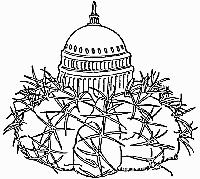
 |
Selected Plants of the
|
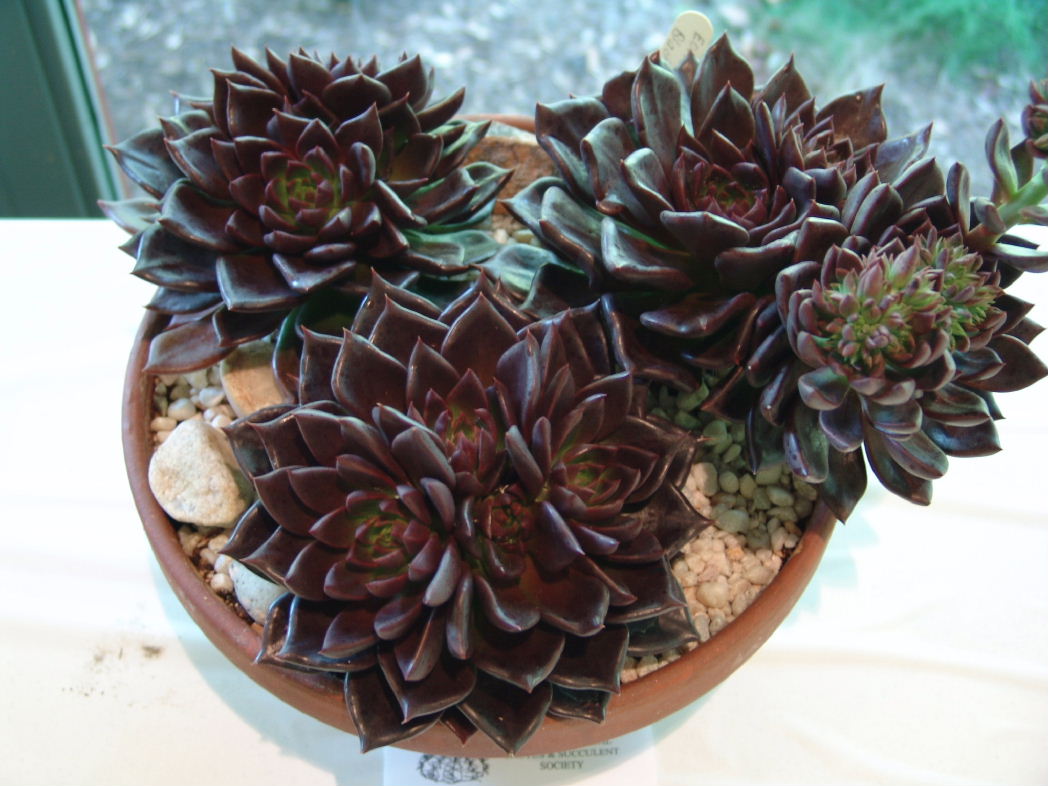 |
Echeveria 'Black
Prince'
Grown and Exhibited by: Ingrid Fritze |
|
 |
Haworthia truncata var. maughanii
Grown and Exhibited by:
Bob Petza |
|
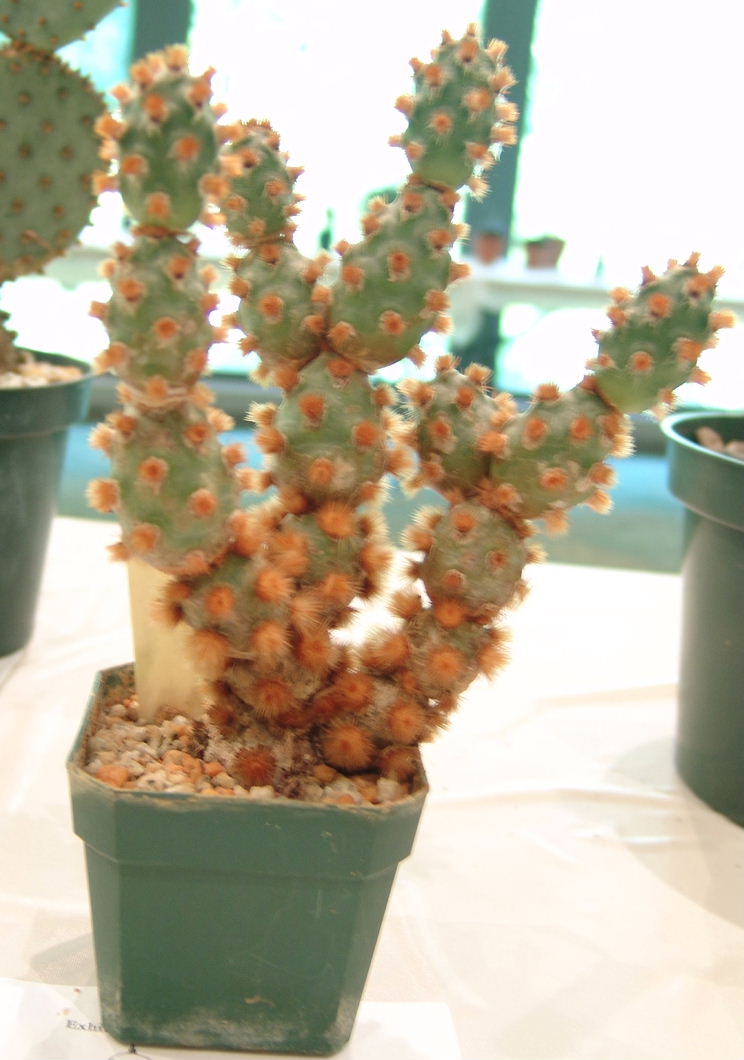 |
Tephrocactus molinensisGrown and Exhibited by: Bob PetzaThere
were several attractive opuntias in this year's show, but far and away
the public seemed drawn to two plants, and this was one of them.
This
was the Blue
Ribbon winner in the Opuntia Class 6. T. molinensis is native to
Argentina where is grows in very sandy soils with the stems partially
buried. It has no spines but does have large clusters of reddish
glochids, which thankfully, are not easily detached.
The tephrocacti are members of the subfamily Opuntioideae and certainly have the look of an opuntia. They also have those nasty glochids. Glochids are very small spines that occur in clumps on the body of opuntias and look like tufts of hair. They are however, not tufts of hairs but exceedingly annoying tiny spines that irritate and itch when they get into your skin. |
|
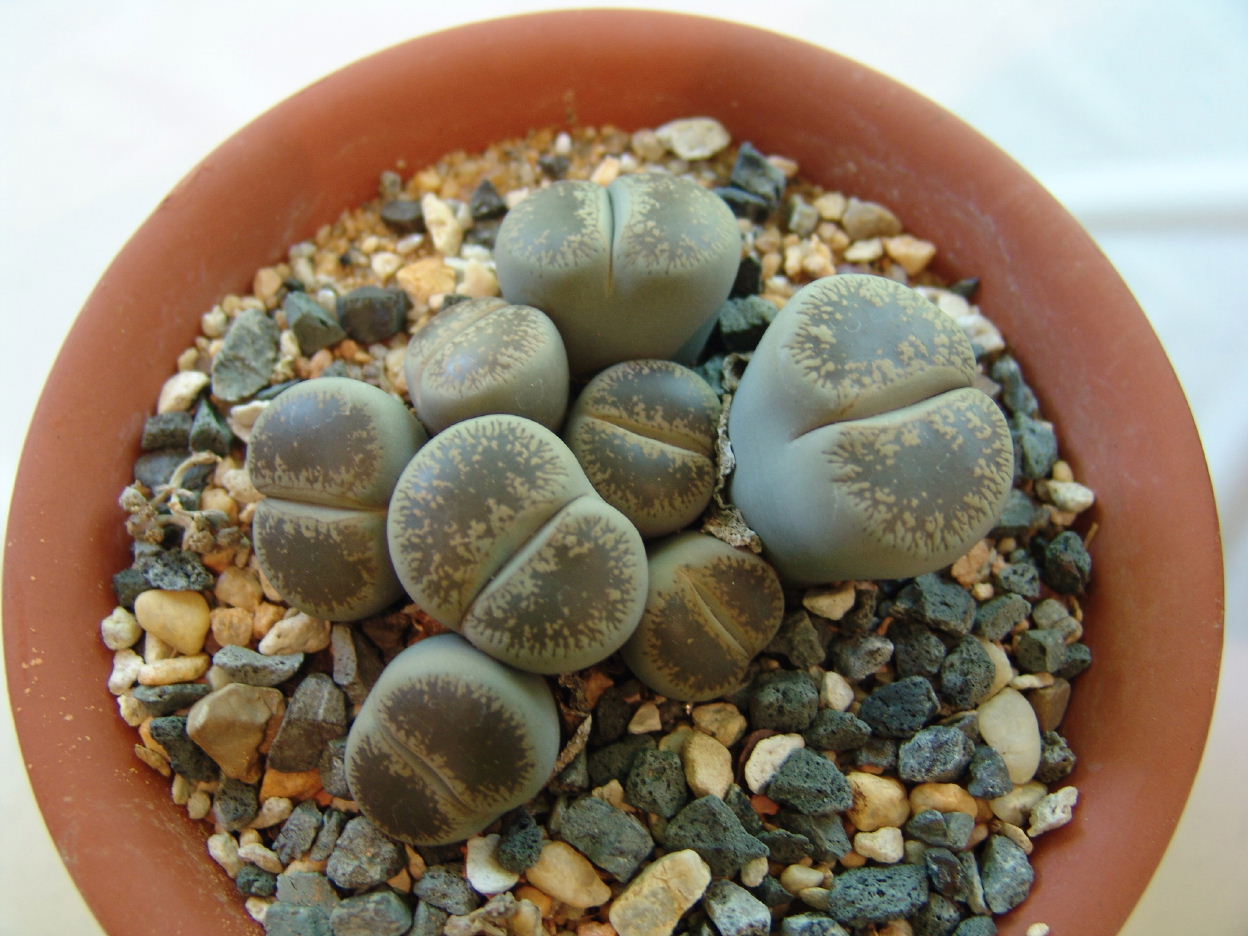 |
Lithops lesliei
var. venteri
Grown and Exhibited
by: Bob Stewart |
|
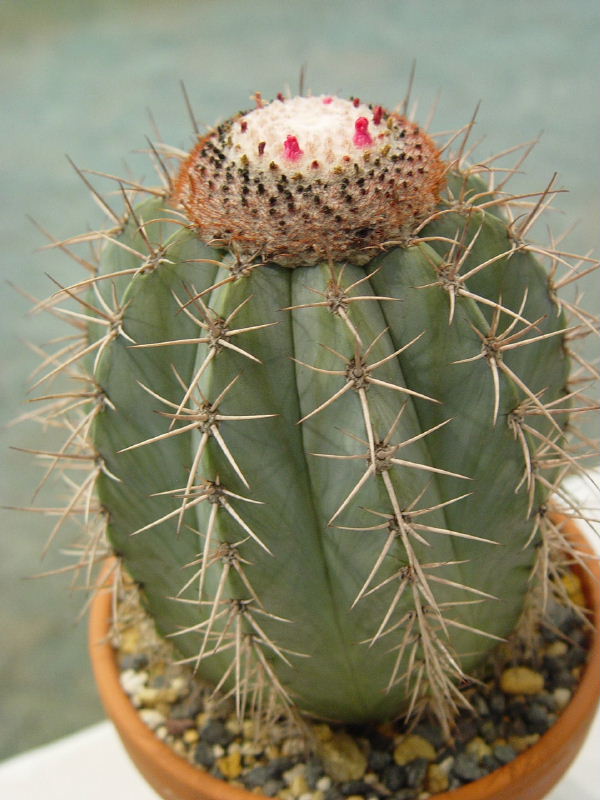 |
Melocactus azureusGrown and Exhibited by Bob StewartThe
Blue Ribbon Winner in Class 7 and another great seed grown plant by Bob
Stewart. Bob sowed the seed in 1993 and the cephalium developed
in 2006. (The cephalium is the strange looking thing on the very
top of the plant. It's made up of many fine bristles and once it
forms the main body of the cactus stops growing and from then on only
the cephalium increases in size.) M. azureus is native to Bahia,
Brazil.
|
|
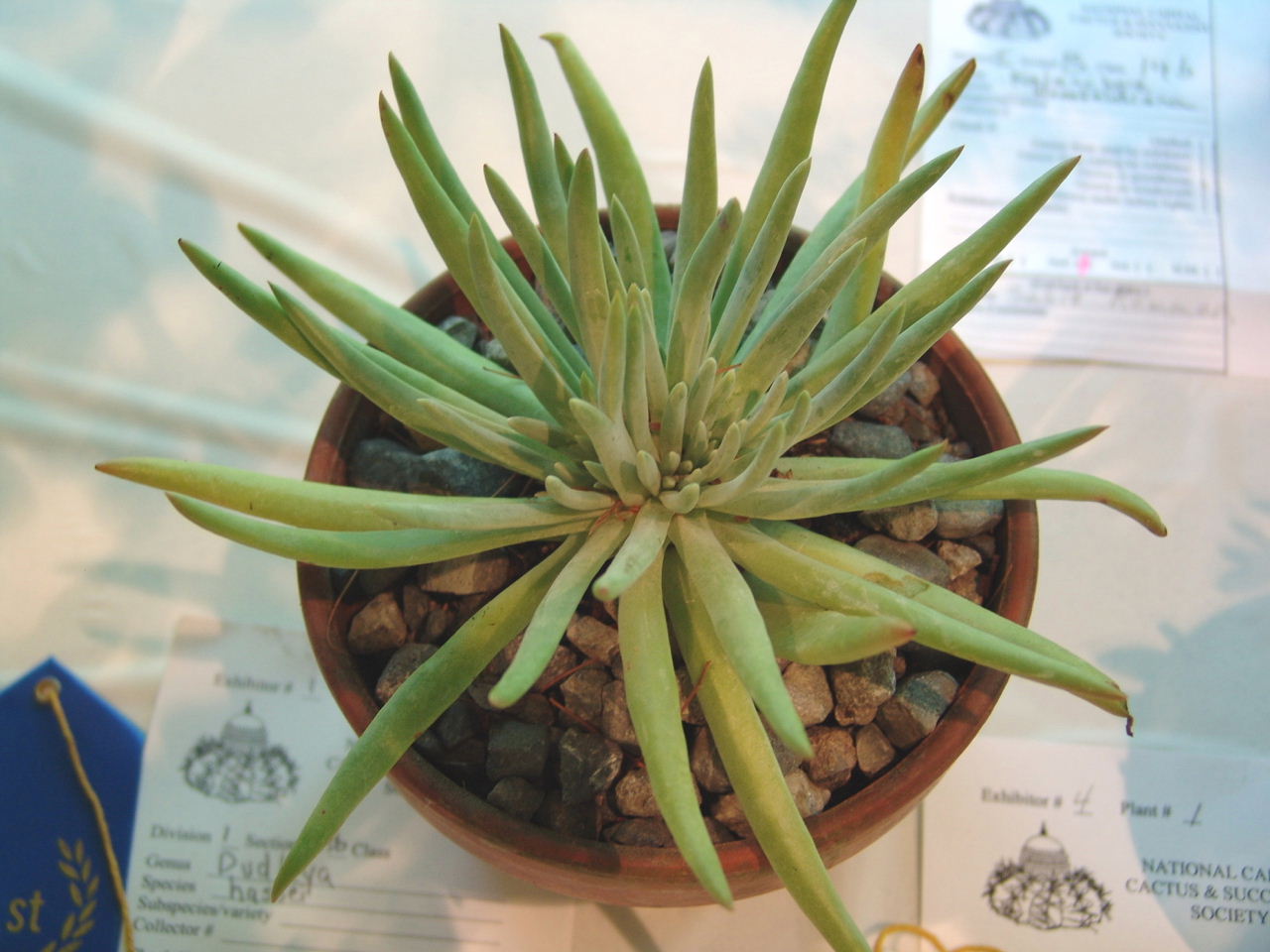 |
Dudleya hassei
Grown and Exhibited by Ty Tydings |
|
 |
Astrophytum 'Super Kabuto'Grown
and Exhibited by Ingrid Fritze
These cultivars/hybrids of
Astrophytum asterias are one of the most popular cacti today and Ingrid
has been raising a number of them from seed. Ingrid reports that
only approximately 25% of the seedlings develop the heavy, white
flocking that makes this plant so desirable. Ingrid, who
produces many blue ribbon plants for our shows, grows most of her
plants in a small backyard greenhouse. |
|
 |
Mammillaria microtheleGrown and Exhibited by Bob StewartThe
Blue Ribbon plant in the mammillaria class was this interesting
specimen of Mammillaria microthele.
In Ted Anderson's book, The
Cactus Family, this plant is listed as Mammillaria formosa subsp. microthele. and native to the
Mexican States of Queretaro and Guanajuato. Many show
visitors commented on the interesting manner in which this plant was
staged, giving the plant an "in habitat" appearance.
|
|
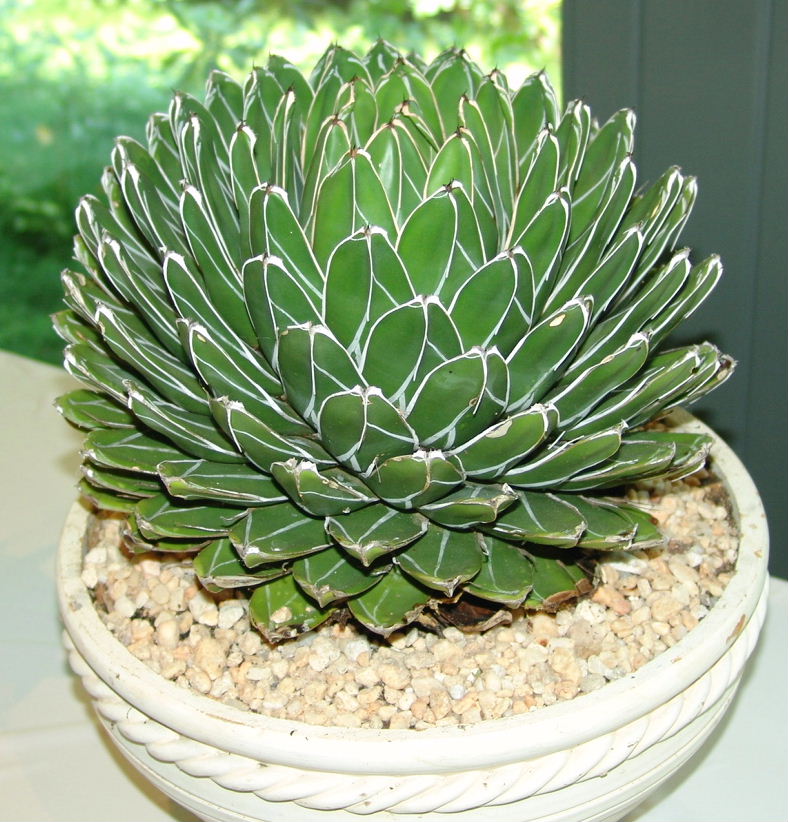 |
Agave victoria-reginae
Grown and Exhibited by Ingrid
Fritze |
|
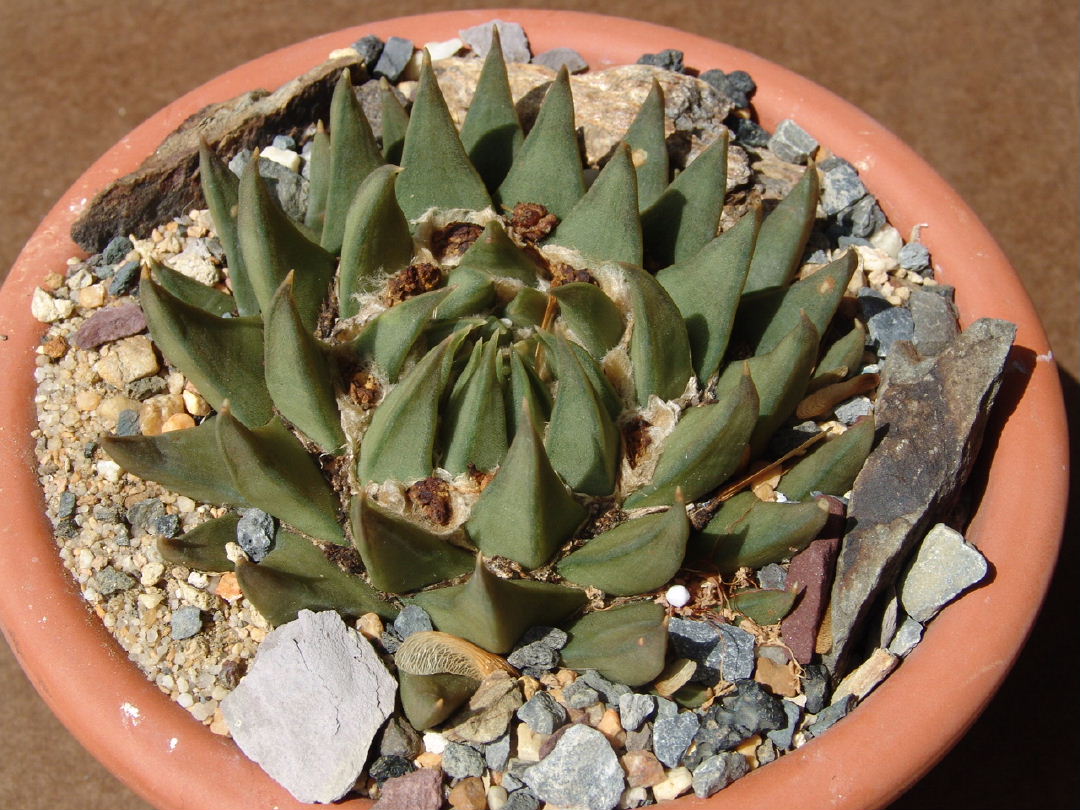 |
Ariocarpus
trigonus
|
|
| Clicking on individual plant
images opens up a larger image. Back To Top Of The Main Page |